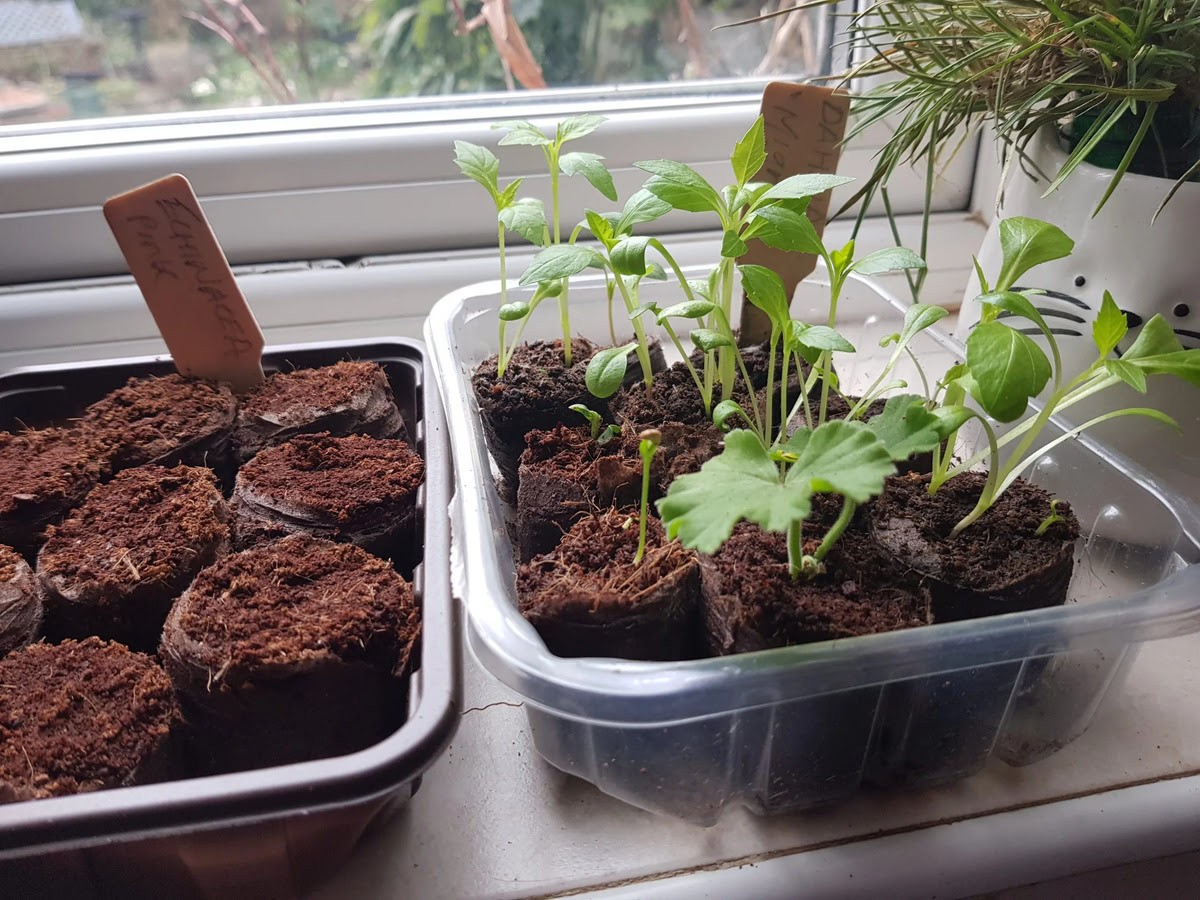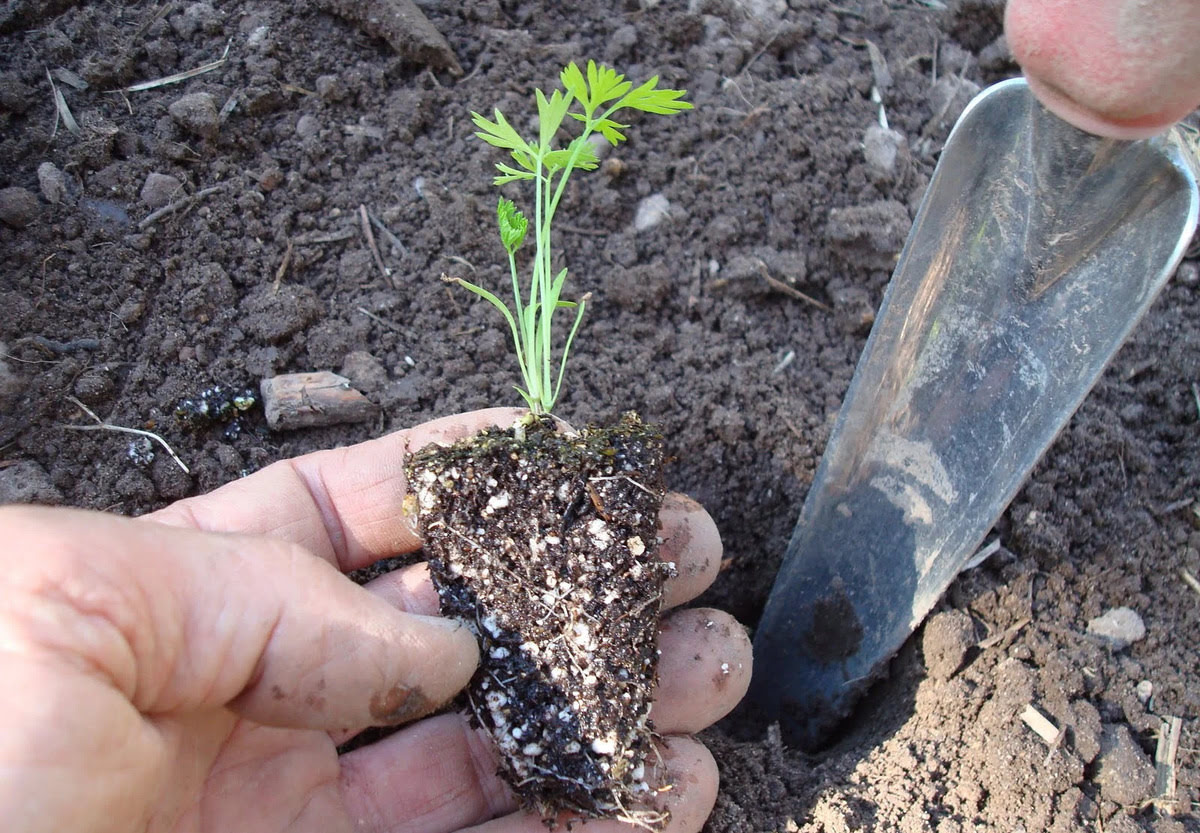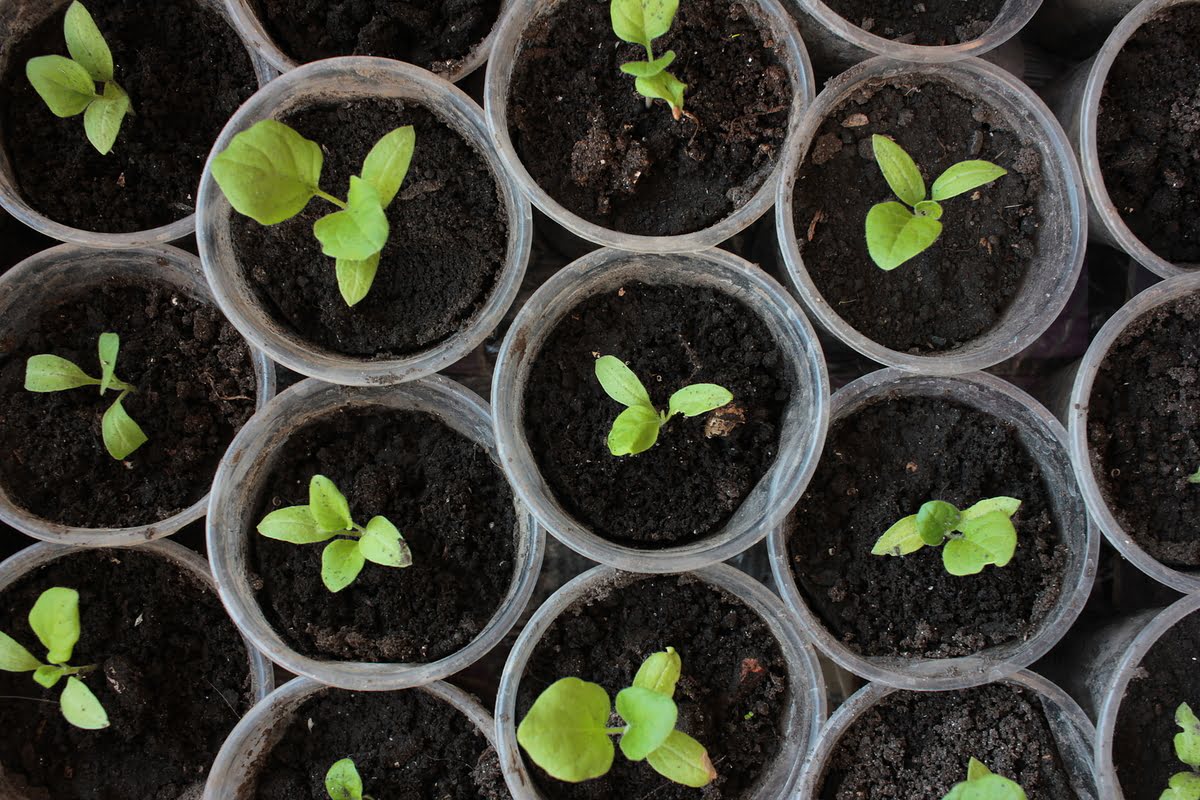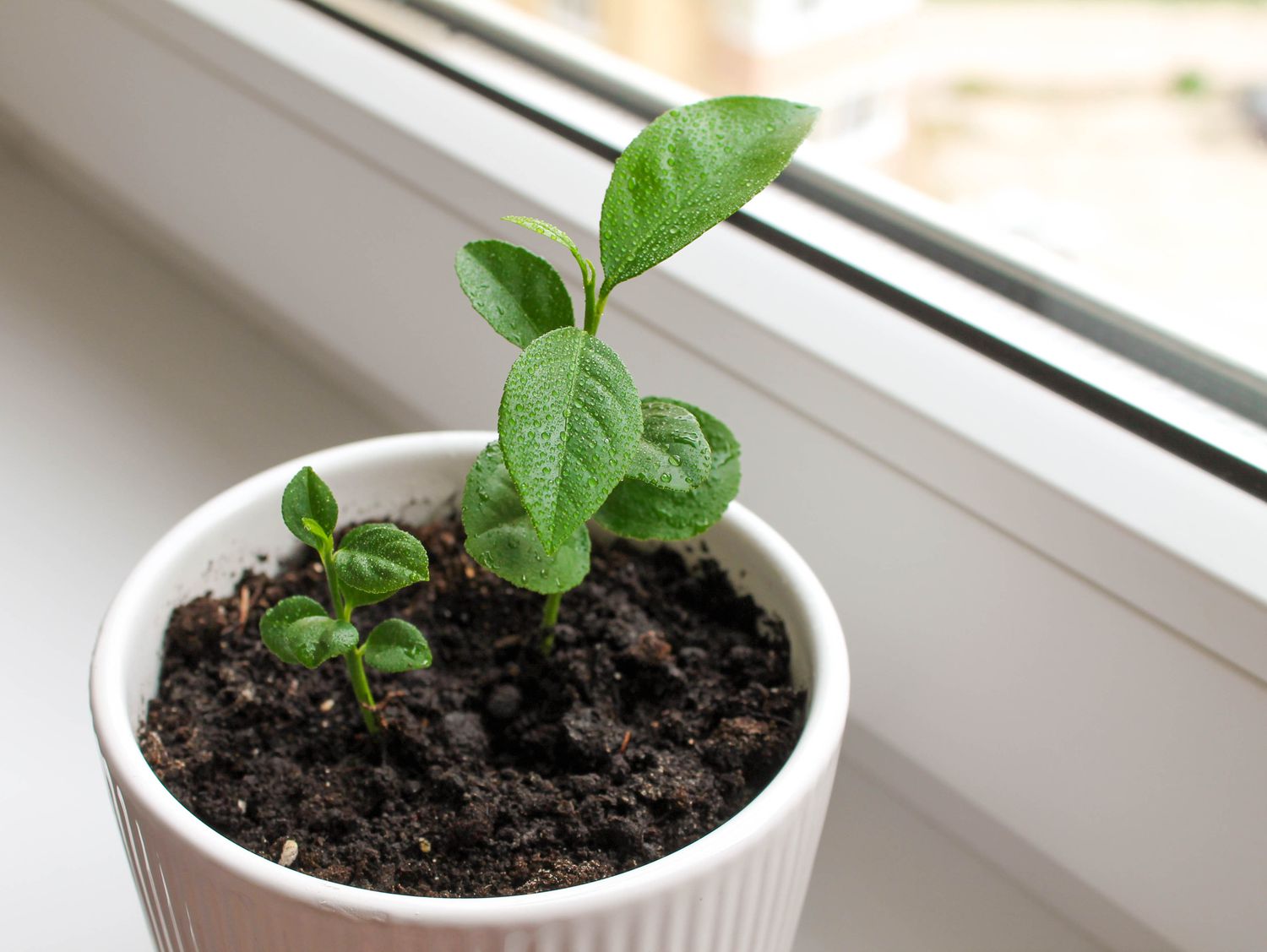Home>Types of Gardening>Edible Gardening>When To Transplant Seedlings From Peat Pellets


Edible Gardening
When To Transplant Seedlings From Peat Pellets
Published: December 31, 2023
Learn when to transplant seedlings from peat pellets in your edible gardening journey. Discover the best time and methods for successful transplantation.
(Many of the links in this article redirect to a specific reviewed product. Your purchase of these products through affiliate links helps to generate commission for Chicagolandgardening.com, at no extra cost. Learn more)
Table of Contents
Introduction
Starting a garden from seeds can be a rewarding and fulfilling experience. It allows you to witness the miraculous journey of a tiny seed transforming into a thriving plant. One common method for starting seeds is by using peat pellets, which offer a convenient and effective way to germinate seeds and nurture seedlings. In this article, we will explore the process of transplanting seedlings from peat pellets, focusing on the optimal timing and techniques for ensuring the successful growth of your plants.
Transplanting seedlings from peat pellets is a crucial step in the journey of cultivating a vibrant garden. It marks the transition from the delicate, protected environment of the pellet to the open ground or a larger container, where the seedlings can further develop and flourish. Understanding the right time to transplant your seedlings and the proper techniques for doing so is essential for their continued growth and success.
As we delve into the intricacies of this process, we will discuss the characteristics of peat pellets, the indicators that signal the readiness of seedlings for transplanting, and the step-by-step procedure for seamlessly transitioning your seedlings. By the end of this article, you will have gained valuable insights into the art of transplanting seedlings from peat pellets, empowering you to nurture your garden with confidence and expertise.
Understanding Peat Pellets
Peat pellets, also known as peat pots or seed starting pellets, are a popular choice for germinating seeds and nurturing seedlings. These pellets are composed of compressed peat moss, a natural, organic material that is valued for its moisture retention and aeration properties. The structure of peat pellets facilitates the germination process by providing a conducive environment for seeds to sprout and develop into healthy seedlings.
One of the key advantages of peat pellets is their convenience. They come in a compact, dehydrated form, making them easy to store and handle. When water is added, the pellets expand and transform into soft, porous containers that are ideal for seed starting. The biodegradable nature of peat pellets also eliminates the need for transplanting seedlings out of plastic pots, as the entire pellet can be planted directly into the soil.
Furthermore, peat pellets offer excellent water retention, ensuring that the seeds remain consistently moist during the germination phase. This is crucial for supporting the initial growth of seedlings. The porous structure of the peat pellets allows for proper aeration, preventing the soil from becoming waterlogged and reducing the risk of overwatering, which can hinder seedling development.
It is important to note that while peat pellets offer numerous benefits, they do have some limitations. Peat moss is a non-renewable resource that is harvested from peat bogs, leading to environmental concerns. Additionally, the pH level of peat moss is acidic, which may not be suitable for all plant varieties. As an alternative, coconut coir pellets can be used, as they are derived from a renewable resource and have a more neutral pH.
By understanding the composition and characteristics of peat pellets, gardeners can make informed decisions about their use in seed starting and transplanting. The next section will delve into the indicators that signal the readiness of seedlings for transplanting from peat pellets, guiding gardeners in the optimal timing for this crucial step in the gardening journey.
When Seedlings are Ready for Transplanting
Transplanting seedlings from peat pellets at the right stage of development is essential for their continued growth and success in the garden. Determining the optimal time for transplanting involves observing key indicators that signify the readiness of the seedlings to thrive in a larger environment.
One crucial factor to consider is the development of the seedlings’ true leaves. Upon germination, seedlings initially produce their cotyledon, or seed leaves, which are part of the embryo within the seed. These initial leaves provide the seedlings with essential nutrients until they can produce their true leaves, which resemble the leaves of the mature plant. The emergence of true leaves indicates that the seedlings have established a robust root system and are ready to photosynthesize and grow vigorously.
Another indicator of readiness for transplanting is the overall size and vigor of the seedlings. As the seedlings mature, they develop sturdy stems and a healthy leaf structure. Observing the growth of the seedlings and ensuring that they have reached a sufficient size and strength before transplanting is crucial for their ability to withstand the transition and thrive in their new environment.
Furthermore, the roots of the seedlings play a significant role in determining their readiness for transplanting. When the roots begin to emerge from the peat pellets and fill the surrounding space, it is a clear indication that the seedlings have outgrown their initial environment and require more space and nutrients to continue their growth.
It is important to note that transplanting seedlings too early can result in transplant shock, where the seedlings struggle to adapt to the new environment, leading to stunted growth or even failure to thrive. Conversely, delaying the transplanting process for too long can lead to overcrowding and competition for resources among the seedlings, hindering their development.
By closely monitoring the development of the seedlings and recognizing the aforementioned indicators, gardeners can ensure that the seedlings are transplanted at the optimal stage of growth, setting the stage for robust and flourishing plants in the garden.
Transplanting Process
Transplanting seedlings from peat pellets into their permanent growing location is a delicate process that requires attention to detail and care to ensure the seamless adaptation of the seedlings to their new environment. By following a systematic approach, gardeners can minimize stress on the seedlings and set the stage for successful growth in the garden.
Before initiating the transplanting process, it is essential to prepare the planting site or containers where the seedlings will be relocated. The soil should be well-prepared, with any amendments such as compost or organic fertilizer incorporated to provide a nutrient-rich foundation for the seedlings. If transplanting into containers, ensure that they are clean and have adequate drainage to prevent waterlogging.
To begin the transplanting process, gently remove the seedlings from the peat pellets. This can be done by carefully pressing on the bottom of the pellet to release the seedling, taking care not to damage the delicate roots. If the roots have extended out of the pellet, they should be handled with extra care to avoid any tearing or breakage.
Once the seedlings are freed from the peat pellets, they should be transplanted into the prepared soil or containers at the same depth at which they were growing in the pellets. Firmly but gently press the soil around the seedlings to provide stability and ensure good soil-to-root contact. Water the transplanted seedlings thoroughly to help settle the soil and alleviate any transplant shock that may occur.
After transplanting, it is important to provide the seedlings with appropriate care and attention. This includes regular watering to maintain adequate moisture levels, especially during the initial period of adjustment. Additionally, protecting the seedlings from harsh sunlight and extreme weather conditions can aid in their acclimatization to the new environment.
Observing the transplanted seedlings for any signs of stress or wilting and providing them with the necessary support and nurturing will contribute to their successful establishment in their new growing space. As the seedlings continue to grow, regular maintenance such as fertilizing and monitoring for pests and diseases will further promote their development and overall health.
By following these guidelines and approaching the transplanting process with care and consideration, gardeners can ensure that their seedlings make a smooth transition from peat pellets to their permanent growing location, paving the way for a bountiful and thriving garden.
Conclusion
Transplanting seedlings from peat pellets marks a significant milestone in the journey of nurturing a garden from seeds. By understanding the characteristics of peat pellets, recognizing the indicators of seedling readiness for transplanting, and following a careful transplanting process, gardeners can ensure the successful adaptation and continued growth of their seedlings in their permanent growing space.
Peat pellets offer a convenient and effective method for germinating seeds and nurturing seedlings, providing a conducive environment for the initial stages of plant development. Their compact, dehydrated form and excellent water retention make them a popular choice for seed starting, while their biodegradability simplifies the transplanting process by allowing the entire pellet to be planted directly into the soil.
Recognizing the indicators that signal the readiness of seedlings for transplanting is crucial for ensuring their seamless adaptation to a larger environment. The emergence of true leaves, robust growth, and healthy root development are key factors to consider when determining the optimal time for transplanting. By observing these indicators, gardeners can minimize the risk of transplant shock and support the continued growth of their seedlings.
The transplanting process itself requires attention to detail and care to minimize stress on the seedlings. From preparing the planting site or containers to gently removing the seedlings from the peat pellets and ensuring their proper placement in the soil, each step contributes to the successful adaptation of the seedlings. Providing post-transplant care, including regular watering and protection from harsh conditions, further supports the seedlings as they acclimate to their new environment.
By approaching the transplanting process with mindfulness and consideration, gardeners can set the stage for the robust growth and flourishing of their seedlings in the garden. As the seedlings continue to thrive and mature, the diligent care invested in the transplanting process will be reflected in the bountiful and vibrant garden that emerges, showcasing the beauty and rewards of starting from seeds.










